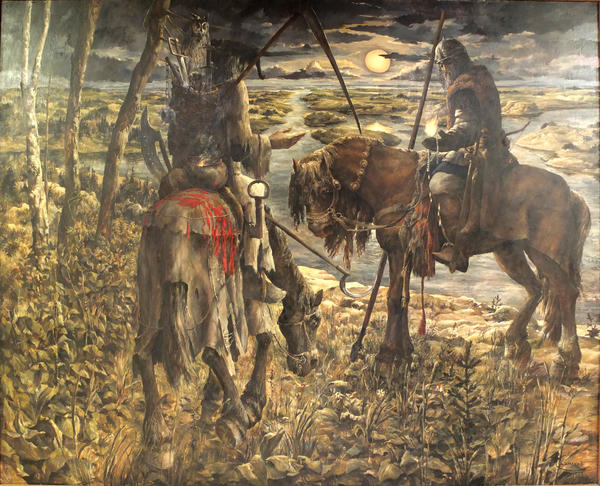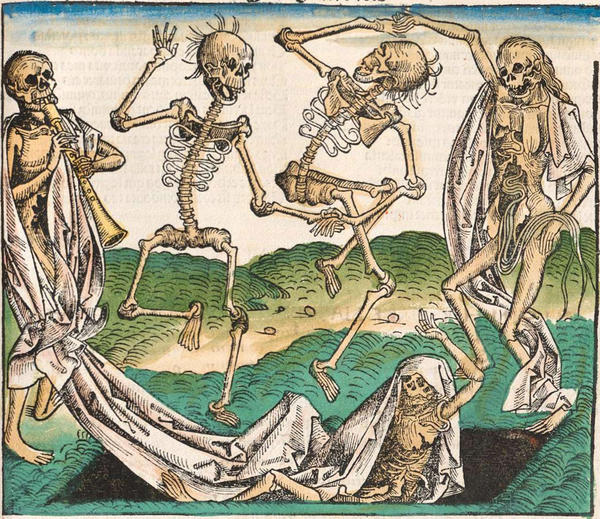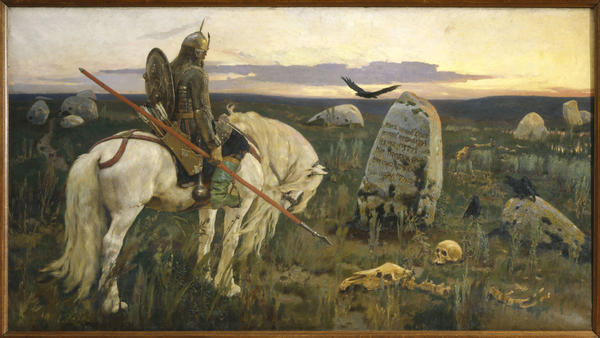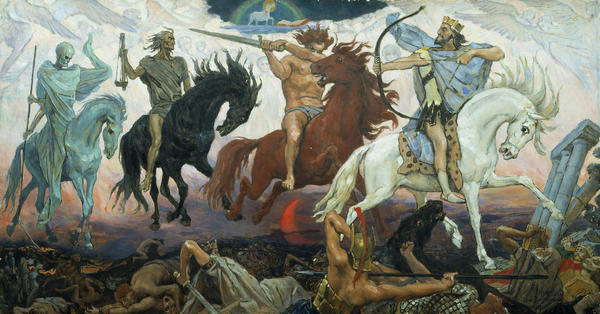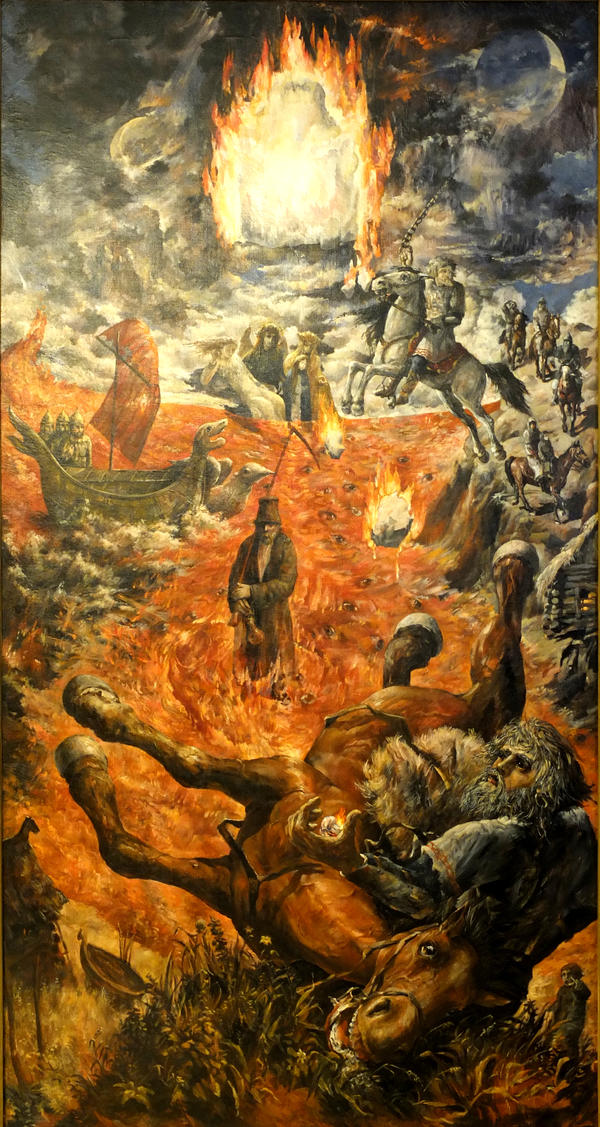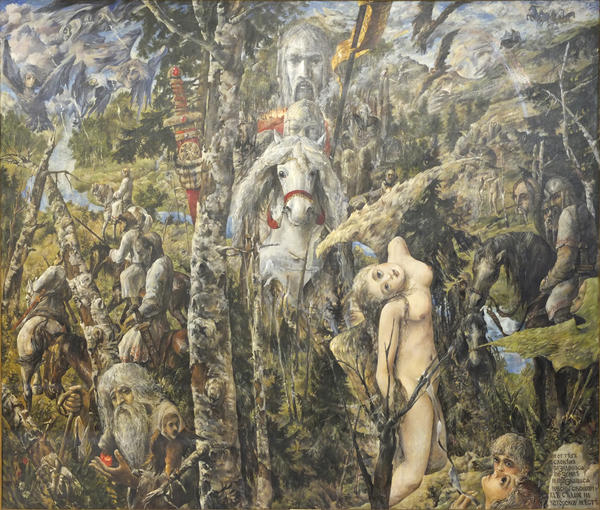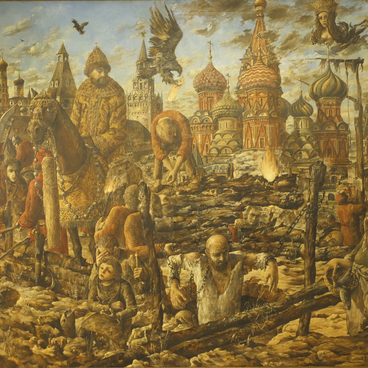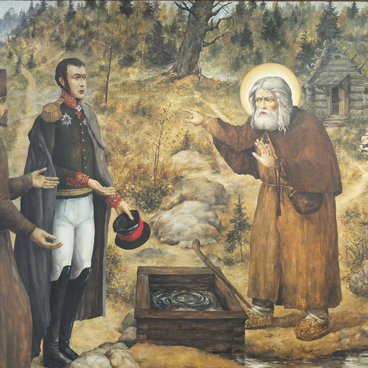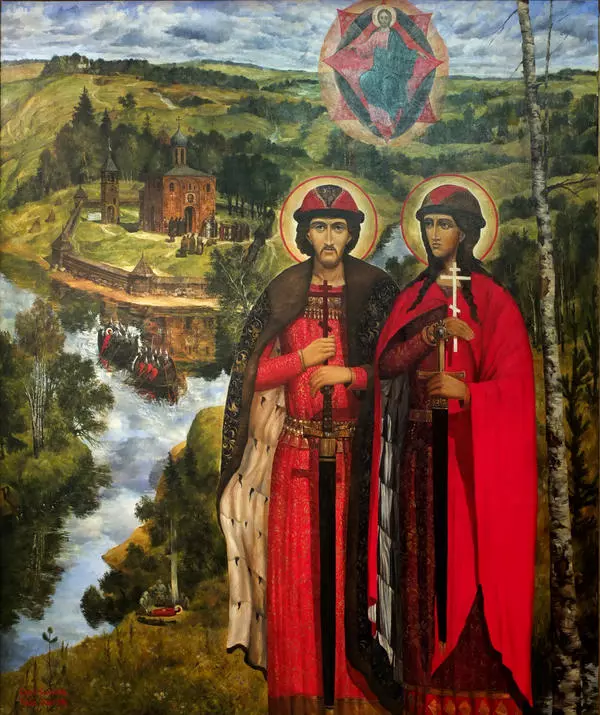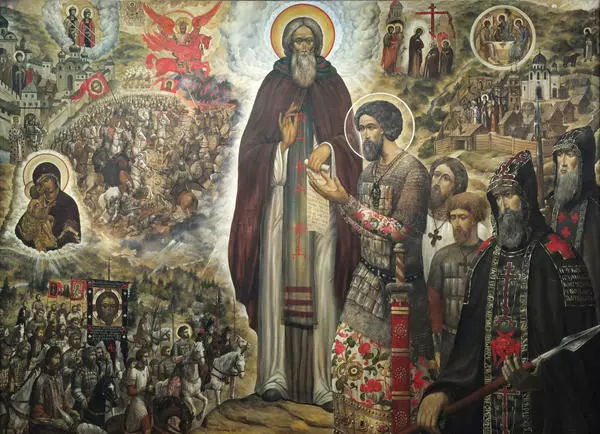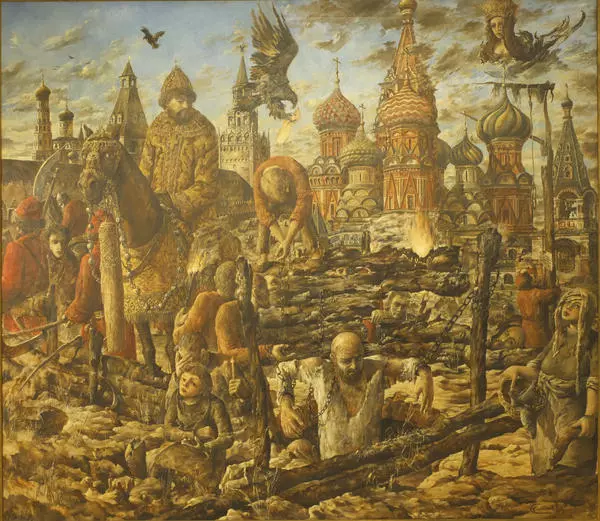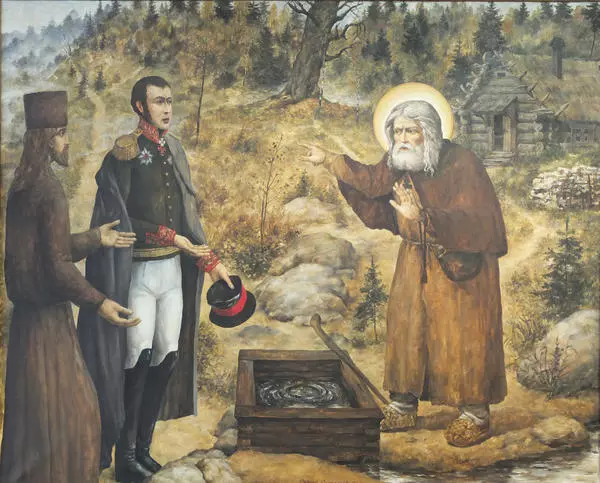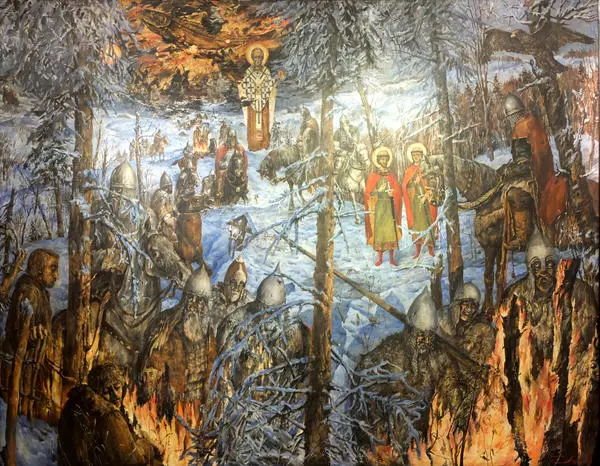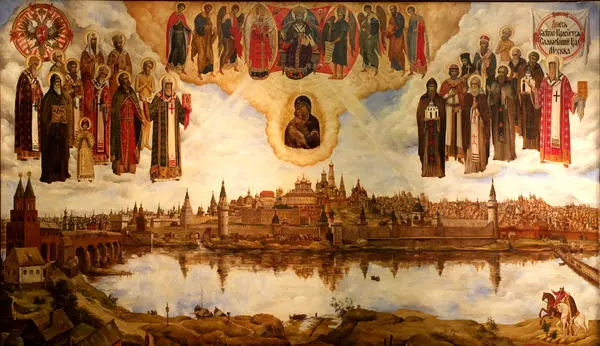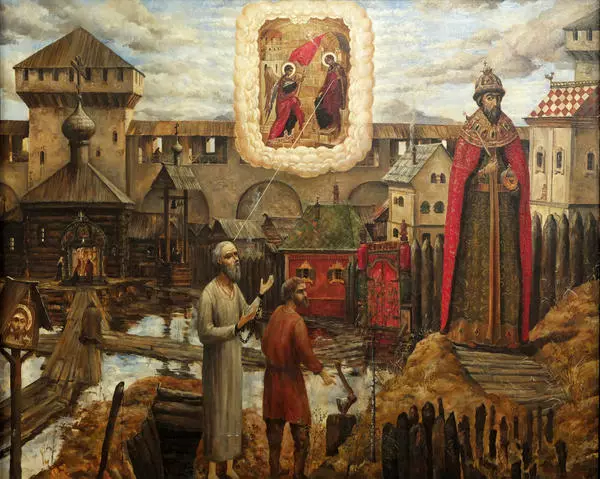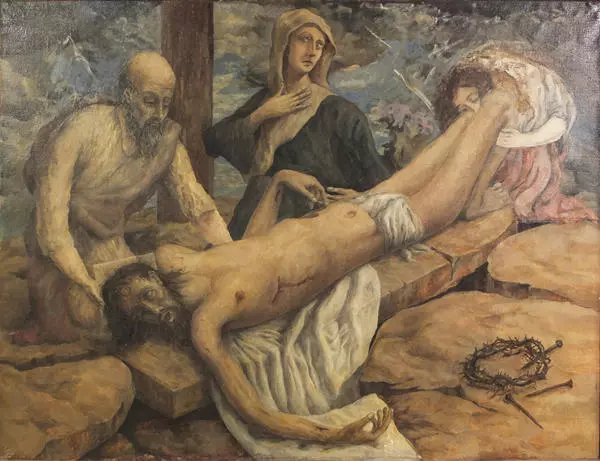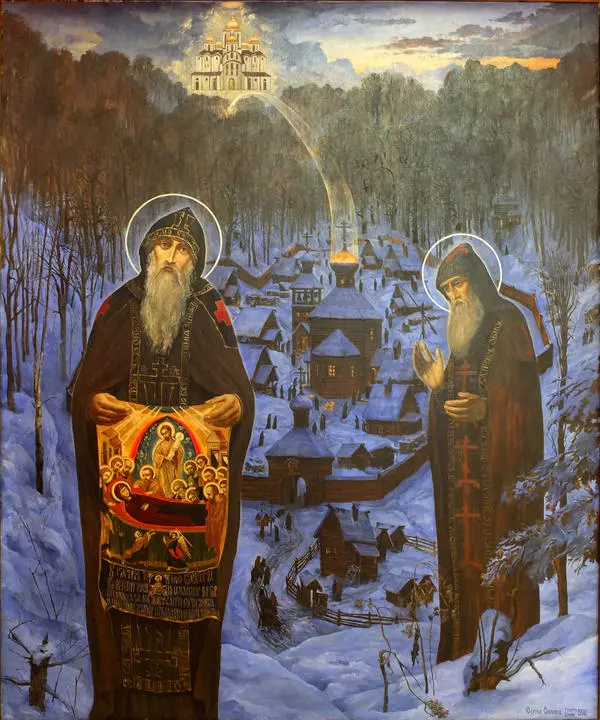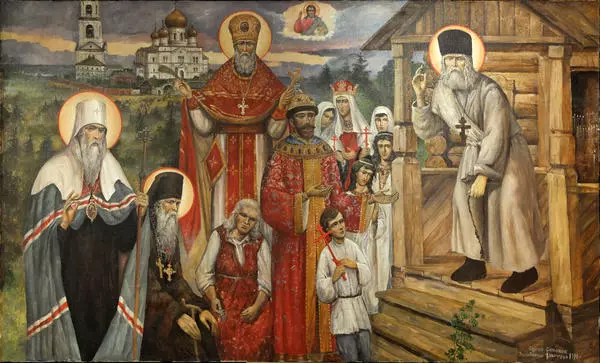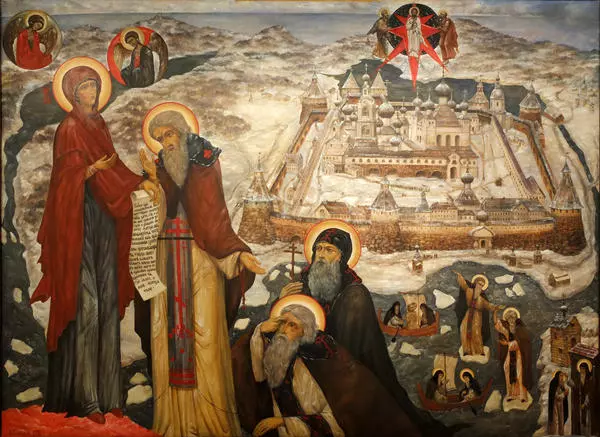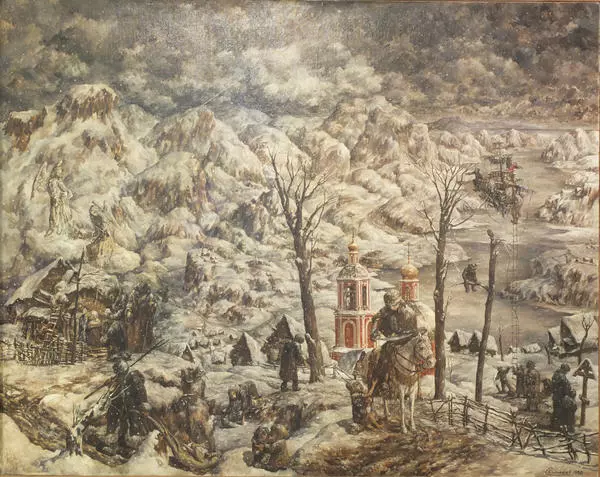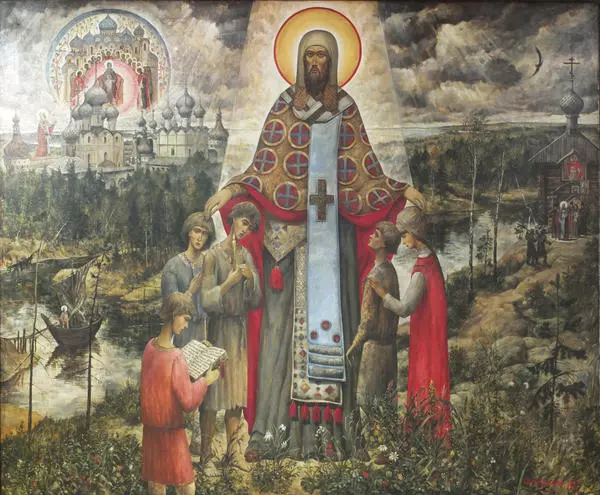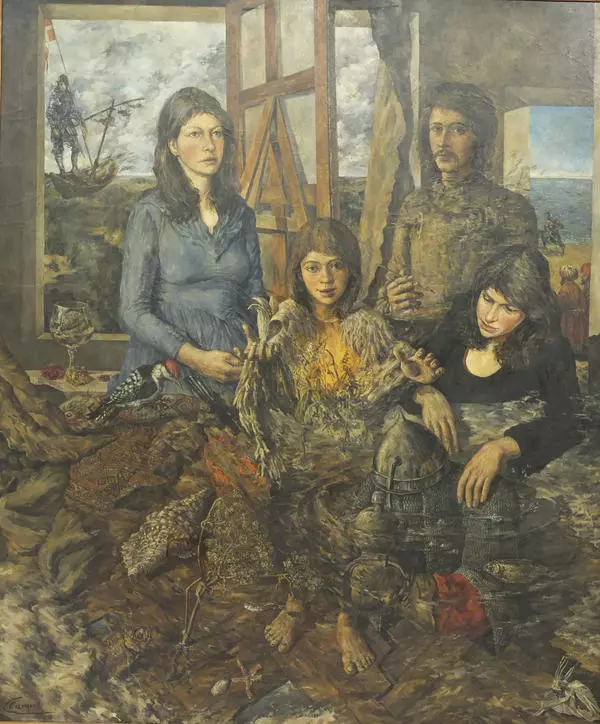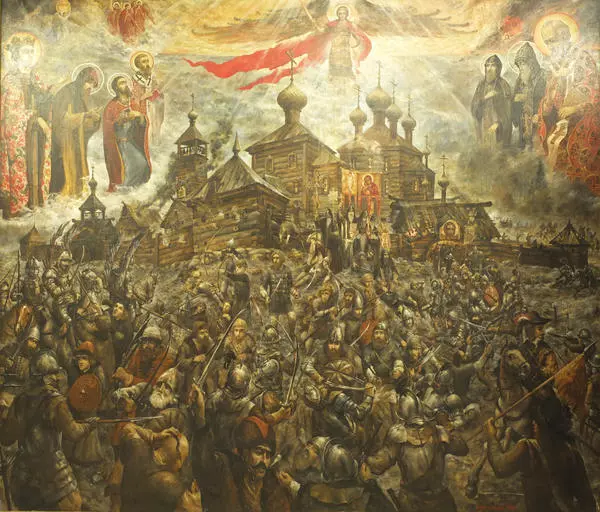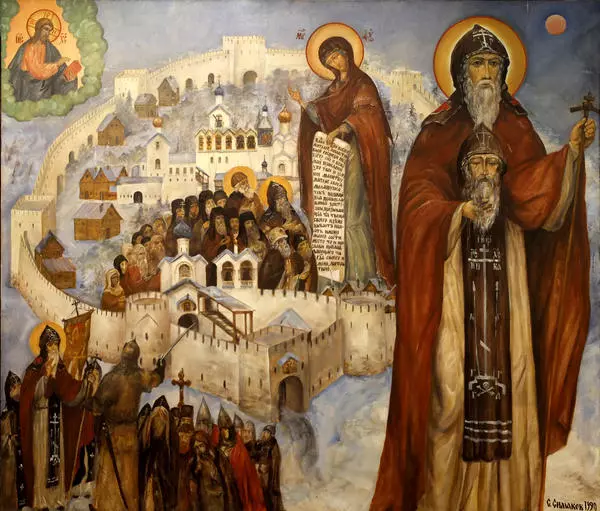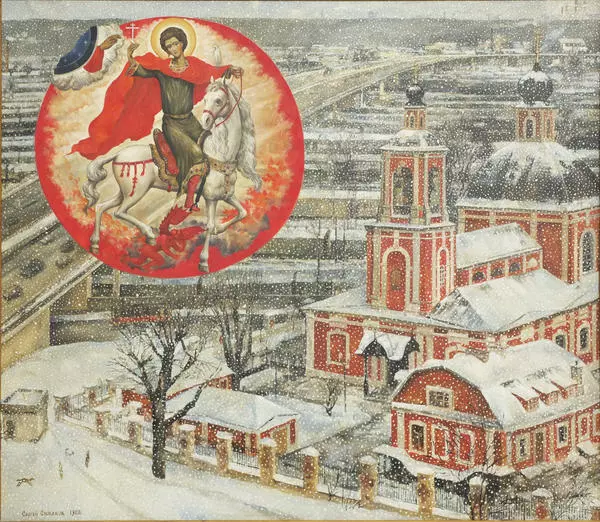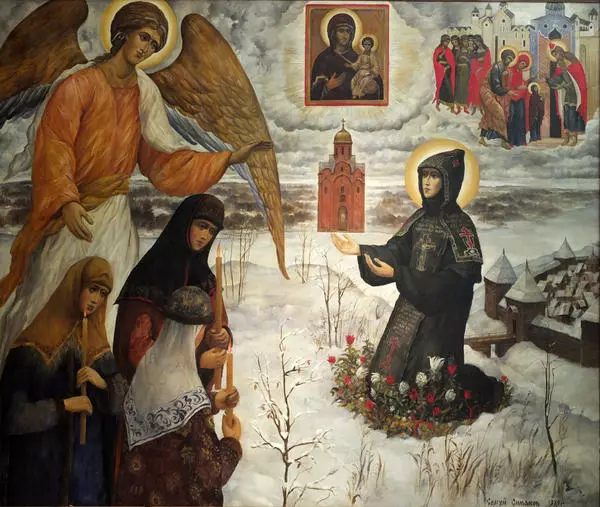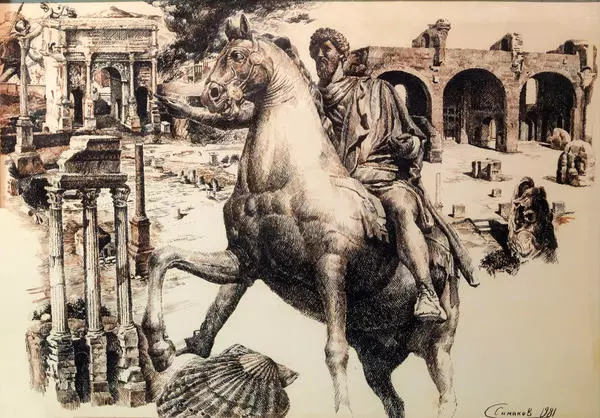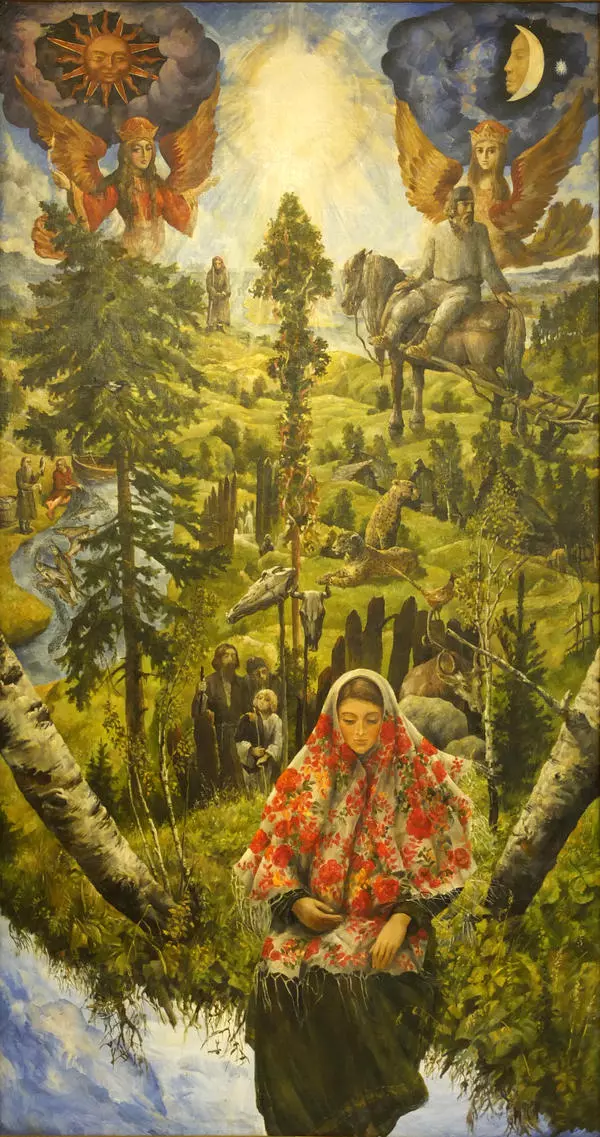In 1983, nonconformist artist Sergei Simakov received baptism and was married in church to his spouse. Since that time he turned to Slavic and spiritual topics. In the same year, the artist created The Controversy of Life and Death — the painting that according to his words reflected the result of the travel along the vast expanses of the ancient Russian literature.
The Controversy of Life and Death
Время создания
1983
Размер
150x180 cm
Техника
Оil on canvas
Коллекция
Выставка
1
Открыть в приложении#1
Simakov S.B.
The Controversy of Life and Death
#2
#3
The painting is based on the topic known in the western art since the XIV century as Dance of Death or Macabre — an allegoric portrayal of the triumph of the forces of death over the temporal being of man. Simakov turned to its Russian version that traces back to The Novel on Controversy of Life and Death of the 16th century. One of the Russian versions describes the story of a hero-knight Anika the warrior — a boaster who dared mock the death itself and was killed for it. Thus, the subject acquired a moral: every person is faced with inevitable repentance.
Michael Wolgemut, The Dance of Death, 1493
Source: wikipedia.org
#4
In Simakov’s painting a person, a brave warrior met death in the image of a horseman. The knight is holding a shining collar of pearls: this is a reference to the Holy Scriptures. The Gospel according to Matthew says that the Kingdom of Heaven is like a pearl — one merchant sold all he had to buy it and gain eternal life of the spirit. The shining collar in the hands of the warrior means not only the end of his mortal life but also possible loss of the Kingdom of Heaven.
The Controversy of Life and Death also echoes the work by Victor Vasnetsov — a master of historic and folklore painting. Both the figure of the warrior and the image of the hero-knight in Vasnetsov’s A Knight at the Crossroads emphasize the inevitable retribution for the chosen road. Vasnetsov also portrayed the host of death as horsemen, for instance on the painting Warriors of the Apocalypse.
The Controversy of Life and Death also echoes the work by Victor Vasnetsov — a master of historic and folklore painting. Both the figure of the warrior and the image of the hero-knight in Vasnetsov’s A Knight at the Crossroads emphasize the inevitable retribution for the chosen road. Vasnetsov also portrayed the host of death as horsemen, for instance on the painting Warriors of the Apocalypse.
#5
Victor Vasnetsov, A Knight at the Crossroads, 1882Source: wikipedia.org
#6
Victor Vasnetsov, Warriors of the Apocalypse, 1887 Source: wikipedia.org
#8
Sergei Simakov, Alatyr Stone, the right part of the triptych The Morning of the Slavs, 1984-85
Source: State Autonomous Institution of Culture of Yaroslavl Region, Uglich State Historical, Architectural and Art Museum
The topic of the ethical choice of a person also came up in later works of Sergei Simakov. For instance, in the right part of the tryptich The Morning of the Slavs a proud warrior combining the traits of boaster knights Vasily Buslaev and Anika the warrior perished in an attempt to gain the magical power of the pagan relic — Alatyr stone. In the central part of the same tryptich, the artist portrayed pre-Christian life of Russian ethnic groups in the shape of a scary pagan nightmare.
#9
Sergei Simakov, The Horse of Svyatovit, the central part of the triptych The Morning of the Slavs, 1984-85 Source: State Autonomous Institution of Culture of Yaroslavl Region, Uglich State Historical, Architectural and Art Museum
#10
State Autonomous Institution of Culture of Yaroslavl Region, Uglich State Historical, Architectural and Art Museum
читать дальшескрыть
00:00
00:00
1x
The Controversy of Life and Death
Время создания
1983
Размер
150x180 cm
Техника
Оil on canvas
Коллекция
Выставка
1
Открыть в приложении
Поделиться

